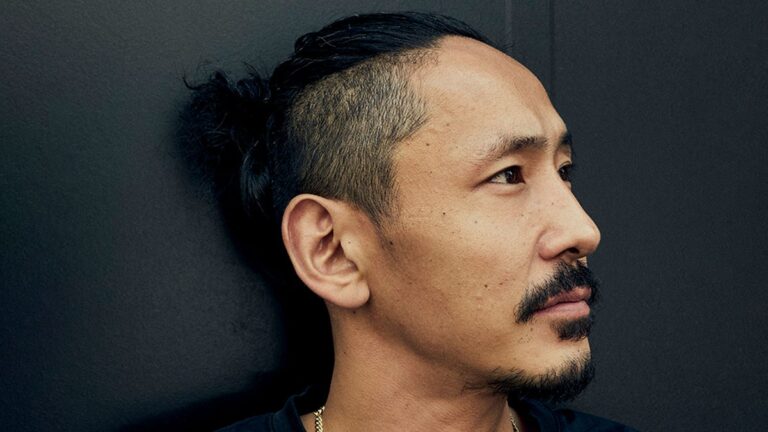Unlike other LVMH Prize alumni, Kuwata didn’t jump at the chance to stage a big runway show with his winnings. In fact, he wasn’t planning on showing at all, but when Pitti approached him last year, he felt the timing was right. “I want to show people how much we have progressed,” he says. “When I applied for the LVMH Prize, it was only me. Now, I have two assistants and a team of interns. The vibe is really good. There’s no ego.”
Pitti is a way to boost awareness following the prize win. “When I won the LVMH Prize, [Setchu] only had 7,000 followers. Now, we have 35,000,” he tells me. “Pitti is the biggest men’s fashion event in the world. It’s a great opportunity for us to show people what we do.”
Kuwata himself has remained quiet so far, allowing Setchu to speak for itself. But now, as designers from Simon Porte Jacquemus to Jonathan Anderson enter the limelight, and customers increasingly want to know the person behind the clothes, he’s reconsidering. “My advisor Fabrice Paineau [from the LVMH Prize] told me Setchu is too mysterious, and that consumers need to know me. So I am adding this element of who I am a little bit to this collection. I love fishing, right? So that’s incorporated into the collection [with outerwear and outdoorsy materials].”
The show will take place in Florence’s National Library, and is divided into three parts: morning, evening and night (evident through the colour palettes and silhouettes). There will be a presentation element afterwards so that attendees can stay a while, talk to Kuwata and get up close to the clothes. “I don’t want to do a fashion show that you can see in Paris, London or Milan,” he says. “What’s the point? Pitti is a place where people can take their time because you don’t have to run to the next show.”
Protecting margins and responsible growth
Setchu’s price point is high, ranging from €250 for a T-shirt to €3,500 for a suede coat. Kuwata prefers to limit distribution slightly and sell fewer, high-ticket items. But as material costs rise, he’s struggling to keep his prices where they are. “The price of cashmere yarn increases every two months at the moment. I’ve been doing design for 20 years and I’ve never seen it like this,” he says. “Some buyers complain, saying, ‘Satoshi, we’re not going to buy because it’s too expensive.’ And I have to say, ‘Yes, I understand if you can’t buy it, I’m not going to force you because I cannot reduce the price.’”


